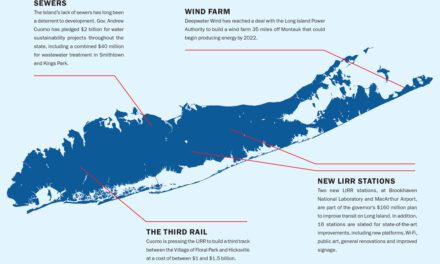The following piece was published on Long Island Business New’s Young Island on 4/2/13:
The following is the conversation held at every regional summit on Long Island:
Advocate: Let’s keep our young people from leaving! There’s a…Brain Drain!
Public: How do we stop it?
Developer: Build denser housing! Let’s make it…affordable! Walkable! Let’s make it…Mixed-use sustainable Smart Growth…with a Downtown, pedestrian-friendly feel.
Municipality: Development approved!
Ugh. It’s time to seriously take on our regional issues.
Does housing density guarantee the hip, young crowd with the smart phones and money to spend on twittering, texting and zip cars? No. Here is a newsflash: The answer to keeping young professionals is not found in housing density, but rather, how diverse our regional economy is. The more economic opportunity, the more likely people will stay.
Simply put- we cannot keep young professionals on Long Island if we continue to create low-wage service jobs on Long Island. What we need are centers that encourage the creation of green jobs, manufacturing, professional/design firms and other industries that will take our economy beyond the low-wage growth we’ve been seeing become more prevalent.
While reading the morning paper, I come across proposals for “mixed-use” developments. For non-planners, mixed-use is defined as a singular development proposal that integrates a combination of residential, commercial, cultural, institutional, or industrial uses which are usually self-contained and walkable. Contrast this to the notion of Euclidean zoning, which is the more traditional approach to land use. Euclidean zoning has every land use category in its distinct place (think of driving out of a residential subdivision to your neighborhood’s supermarket.) Both approaches have their appropriate use, but planners must always be careful not to create conflicting land uses.
Often, proposed mixed-use developments are touted as being walkable, giving residents the ability to “live where they work” and so on. Here is where the notion troubles me. These proposals do have a mixture of retail shops and homes, and yes, they are self-contained for pedestrians, however, many of the jobs created are not exactly supportive of paying the rents required to live in these developments. While the focus of this piece isn’t on affordability (I covered that topic recently), it does help enforce the message that we need to standardize our terms when it comes to the notion. I find it interesting that when it comes to mixed-use development proposals, nobody ever stops and says “Hey- can those workers really afford to live there?”
In a recentNewsday article, noted regional economist Pearl Kamer said the following regarding this trend of localized, low-wage growth: “It’s emblematic of the transformation of the economy toward low-paying jobs away from high-paying jobs…the upshot is less purchasing power for Long Islanders, which means a decline in the standard of living.” When approving mixed-use proposals, municipalities need to be mindful of this. Since when does the number of jobs gained trump the quality? Too often, you see that a township rezoned valuable industrial land for residential usage. If these trends continue, our industrial land will be a distant memory. With each conversion from I to R, we lose the economic opportunity to further diversify, and thus strengthen, our local economy.
Density, is a tool that we can use when needed. Like sewers, increasing density is not a catch all solution for our regional woes, and definitely will not solve the “Brain Drain”. It would be more productive to focus our development efforts on nurturing a diverse regional economy that isn’t reliant upon one sector, or one type of worker. We knew that the decline of Long Island’s defense industry was coming back in 1988, and yet we’ve done little since then to soften the blow of Grumman’s slow, yet still-powerfuldeparture.
We must begin to adapt our zoning to allow for more creative and prosperous uses where it is appropriate. Currently, we are consistently creating opportunities for out-of-reach residential, and low-wage commercial developments. I’ve praised Accelerate Long Island’s efforts in the past to build a profitable base from our regional research assets, and hope we can take their efforts a step further.
How else can we foster growth that is mixed-use, sustainable, green, walkable, downtown, pedestrian-friendly and affordable? I use these terms sarcastically, but their misuse can have serious implications for both Nassau and Suffolk Counties.











